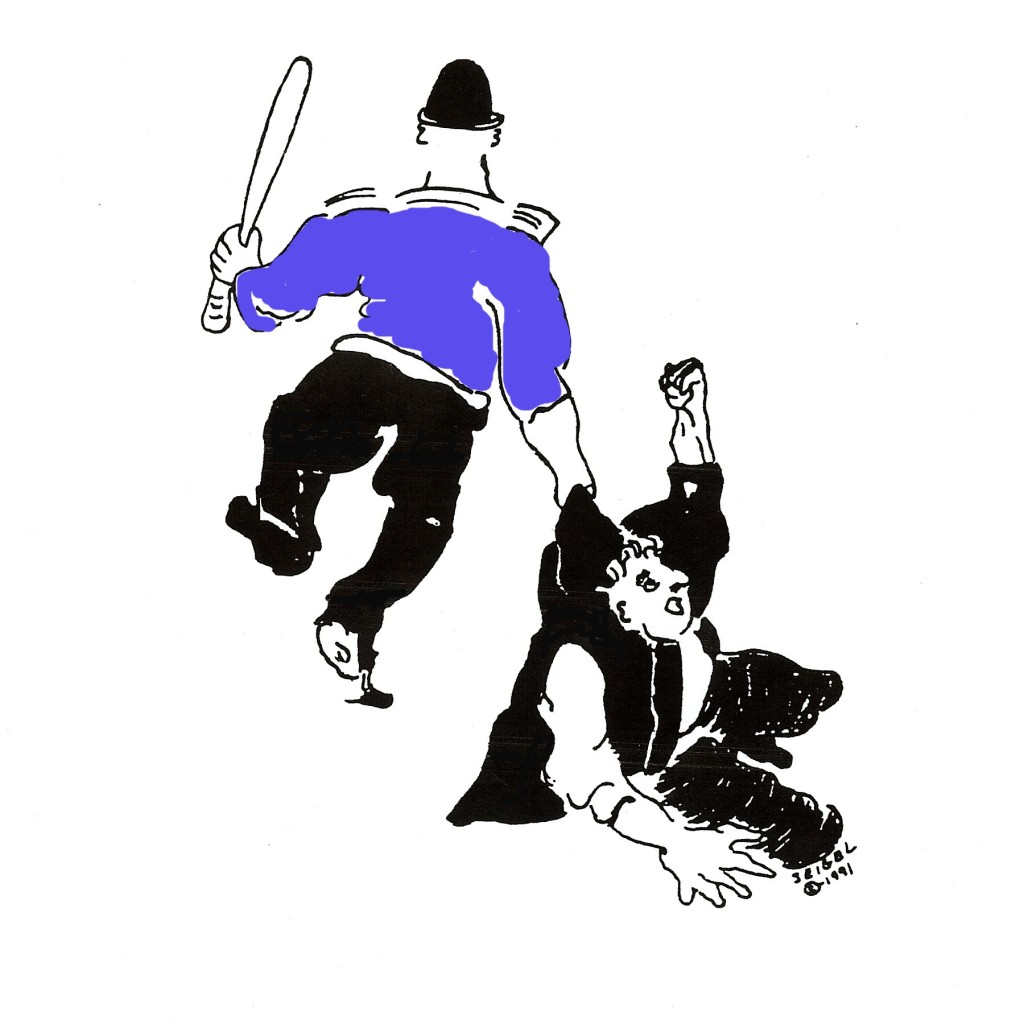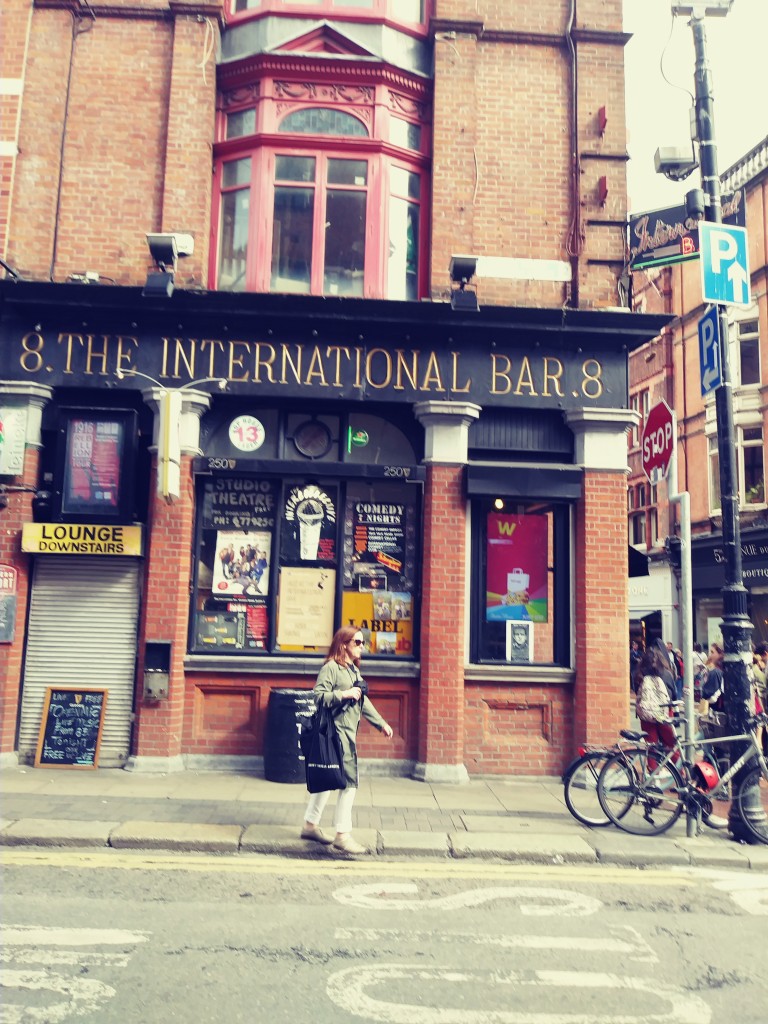The Writers Police Academy (WPA) is an annual 4-day conference held for mystery writers (though anyone may attend) at a policy training facility, with classes that enable writers to gain knowledge that will help them write more authentically when presenting crime and law enforcement in their fiction. This year, it was held at the Northeast Wisconsin Technical College, International Public Safety Training Academy in Green Bay, Wisconsin.
While there, I gained some knowledge of ballistics; the profiling of serial killers; defense and arrest tactics; and the mindset of cops from their point of view. I also got hands-on experience in how handcuffs work, found that I could drag a 150-pound body-dummy out of harm’s way, and got to fire a Glock on an indoor firing range (for this last, of course, one had to have a background check in advance). [Although, thus far, my venture into the mystery genre has been in writing international thrillers, not police procedurals, the information and hands-on experience is valuable for writing in the mystery genre as a whole.]
The instructors who conducted classes for us generally train police officers, so their instruction gave us the flavor of what they attempt to impart to actual recruits. What one comes away with is the sense that, whatever policemen may do once they are on the job, the instruction–at this facility in any case–emphasizes prudence and very specific procedures, for safety of both the police officer and the victim or suspect.
At the same time, the various instructors attempted to impress upon us how split-second the timing is for a policeman to assess a situation and react [eg., the heaviness of the gun belt; the difficulty of getting a hand gun out of its holster; demonstration of how quickly someone with a knife can get to an officer before a hand gun can be drawn; and class participation in a shoot-don’t shoot scenario (no real guns or bullets) in which one would have to distinguish threat from non-threat in a real-time scenario].
The two instructors who impressed me the most were not so much teaching us practical tactics but talking about police mindset. The first, teaching a class called cop mindset, noted that the police feel like they are being attacked by the media and activist groups when they just want, like anyone else, to go home alive to their loved ones at the end of their day. (He emphasized that he was not saying this sense of being attacked was necessarily his own viewpoint but that he was just telling us how many in the police feel.) This instructor gave a hypothetical example of being put between a rock and a hard place: a call comes in that a woman is committing suicide. A policeman answers the call. The woman is slitting her wrists, but when she sees him, she comes at him with the knife, and he shoots her to prevent being stabbed. He is criticized for not having waited for back-up. But if he had waited for back-up, and she had died, he would have been criticized for waiting.
I very much took his point and sympathized. Still, what went through my mind was, what about the woman who calls 911 and the police answering the call shoot her? (And of course, what about all the unarmed black people being killed b policemen?) I felt that he should be addressing that side of the situation too, and felt resentful about it. But because this was at a police training facility and because we were there to learn their techniques and their thinking for our fiction, it did not seem the place to raise questions about the recent rash of police killings of unarmed people. In addition, in the moment, I did not feel I could find a way to raise it without sounding hostile or combative, which would not be constructive. Still, it would be good–perhaps not at a police training facility, but in some setting–to have police and community discuss these things openly and frankly.
Given that it was a police training facility, I think it was certainly fair game for them to set out their side of things. The problem is that, by only addressing that side rather than acknowledging the other side of the problem, the defense comes off sounding a bit like public relations propaganda and so tends to detract from the credibility of what they’re saying.
The second instructor whose class impressed me taught Defense and Arrest tactics. Noting that an officer must approach everyone he or she deals with as a potential threat, he talked about the need to observe not only what people say but their tone, their body language, etc. (It was also noted, though I’m not sure it occurred in his class, that if someone is on the ground with their hands beneath them, an officer’s knee on his or her back may appear unnecessary because the person is on the ground but, until the person’s hands are visible, the officer can’t know whether he or she may have a weapon, turn over, and use it.)
The story this instructor told, that I found impressive, was that when he was a young officer, he and two other officers had to arrest a man. The man was responding very belligerently to the other two officers. This officer came up from behind, tackled the man, and handcuffed him. But when he got the man to his feet, without giving it any thought, he brushed snow off the man’s trousers and jacket. The man, who was still angry with the other two officers, turned to him and said, “thank you for not treating me like a dog.” The important part of this story is the effect it had on this young officer. He said it made him think consciously about the need to treat suspects and criminals with respect, giving them their human dignity regardless of their behavior towards him, and that he felt that doing so makes the police safer. It is the expression of that kind of thinking in an instructor that impressed me most about this training facility.
One thing did disturb me about the training. On the first morning, the trainers performed a car-stop vignette for us in which the driver shoots at the police, and runs, and the police must first get their injured officer out of harms way and then approach the car. The scenario was fine except that the recruit/officer playing the shooter was black–which reinforces the idea conscious and/or unconscious of what a shooter looks like–something that the police ought to be making an effort to change, especially now. It is one thing, in caution, to approach everyone as a potential threat and another thing to feed into a perception that a particular color or ethnic group is a potential threat. And after all, they could have had any recruit/officer play the shooter’s role.
One other thing struck me quite oddly about this weekend. This is not about the conference, instruction, or instructors, but rather, about the other attendees. They were all very pleasant and very enthusiastic. But, this was the weekend that the Nazis marched in Charlottesville, injuring and murdering counter-protesters. I would not necessarily have expected people to get into deep discussion about it, but not one attendee even mentioned it. (I mentioned it to two people, only to note how odd it was that no-one referenced it. Their reactions were that perhaps people wanted to stay away from politics. But I have never been at any other writers’ conference where some huge world or national event occurred and no-one mentioned it at all–not even to say, “Did you see that on the news? Isn’t it terrible?” And frankly, in class room situations discussing law and law enforcement, it seems more normal to me to raise it, even if an instructor were, quite naturally, to say that they don’t know enough details to comment on it. A deliberate disconnection from the world. Very odd. Very odd, indeed.)
Note: for those who might like to check out information on the Writers Police Academy or attend in August 2018, its website is: http://www.writerspoliceacademy.com



 This trip, I was staying in the Temple Bar area along Wellington Quay for some of my time, and on St. Augustine street the rest. I loved waking to the cries of sea gulls in the mornings, and the cool, fresh air. I also loved the Leprechaun Museum which, despite its name, is neither a museum nor a tourist attraction devoted to what Americans would expect Leprechauns to be. Rather, it is a place of Shanachies–storytellers of old Irish myths. We were treated to wonderful tales more performed than merely recited by a terrific, theatrical storyteller named Emily.
This trip, I was staying in the Temple Bar area along Wellington Quay for some of my time, and on St. Augustine street the rest. I loved waking to the cries of sea gulls in the mornings, and the cool, fresh air. I also loved the Leprechaun Museum which, despite its name, is neither a museum nor a tourist attraction devoted to what Americans would expect Leprechauns to be. Rather, it is a place of Shanachies–storytellers of old Irish myths. We were treated to wonderful tales more performed than merely recited by a terrific, theatrical storyteller named Emily.